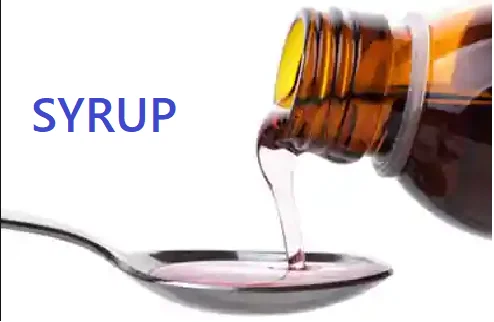MFR of Pantoprazole Sodium Sesquihydrate Injection
PURPOSE: This Master Formula Record (MFR) is written to describe the formulae, manufacturing procedure, specifications, packing details of dosage form.
SCOPE: This MFR is performed and is applied during the manufacturing of dosage form.
Also Read:- MFR of Hungry Syrup
RESPONSIBILITY / ACCOUNTABILITY:
It is the responsibility of Manufacturing Chemist to follow and adhere to this MFR. The Production Manager, QC/QA Manager are accountable for the strict adherence to the master formula.
COPY ISSUED TO:
- Master Copy : Manager Quality Assurance
- Copy No. 1 : Production Manager
- Copy No. 2 : Manager Quality Control
- Copy No. 3 : Small Volume Parenteral Section
| PRODUCT NAME : Pantoprazole Sodium Sesquihydrate Dry Injection | BATCH SIZE: 1.250KG. |
| PRODUCT REFERENCE CODE: | UNIT SIZE: 40.0mg |
| GENERIC NAME: PANTOPRAZOLE SODIUM INJECTION | PACK SIZE: 6X40 mg |
| DOSAGE FORM: PARENTERAL DOSAGE FORM | STRENGTH: 40.0mg |
| DEPARTMENT: STERILE PREPARATION | EXPIRY DATE: AFTER 24 MONTHS FROM THE DATE OF MANUFACTURING |
COMPOSITION:
Each Vial Contains
Pantoprazole Sodium Sesquihydrate
Equivalent to Pantoprazole Sodium 40.0mg
EQUIPMENTS TO BE USED:
| SR. NO. | NAME OF EQUIPMENT | ASSEMBLING AS PER SOP NO. | CLEANING AS PER SOP NO. |
| 1. | Butyl Bung Washing Machine | ||
| 2 | Semi Auto Vial Washing Machine | ||
| 3 | Auto Clave with SS Transfer trolley | ||
| 4 | Dry Heat Sterilizer | ||
| 5 | Double Cone Blender Machine | ||
| 6 | Auto Dry Powder Vial Filling, Stoppering & Sealing Machine | ||
| 7 | Semi Auto Vial Visual Inspection Machine | ||
| 8 | Auto Vial Labelling Machine |
RAW MATERIALS:
| S.NO. | INGREDIENTS | STD | Theoretical Quantity Req. | Overages % | Total Quantity Used |
| 1. | PANTOPRAZOLE SODIUM | – | 1.250 | – | 1.250 KGS |
| 2. | ISO PROPYL ALCOHOL | I.P. | 0.666 | – | 0.666KGS |
| S.NO. | NAME OF THE MATERIAL | THEORETICAL QUANTITY REQ. | FOR RECORD | TOTAL QUANTITY USED |
| 1. | 10ML CLEAR VIALS | 10000.000 | 10000.000 | |
| 2. | FLIP OFF SEALS RED –13MM | 10000.000 | 10000.000NOS | |
| 3. | RUBBER STROPPER-20MM | 10000.000 | 10000.000 NOS | |
| 4. | ADHESIVE TAPE ROLL BROWN | 2.000 | 2.000 NOS | |
| 5. | CELLO TAPE | 2.000 | 2.000 NOS | |
| 6. | GUM ACCACIA | 0.500 | 0.500KG | |
| 7. | CORRUGATED BOXES C-37 | 75.750 | 75.750 NOS | |
| 8. | PANTOMAC-40MG INJ INSERT | 10000.000 | 2.000 | 10002.000 NOS |
| 9. | PANTOMAC-40MG UNIT CARTON | 10000.000 | 2.000 | 10002.000NOS |
| 10. | PANTOMAC-40MG LABEL | 10100.000 | 3.000 | 10103..000NOS |
| 11. | PANTOMAC-40MG 6X40 mg OUTER CARTON | 1667.850 | 1667.850NOS | |
| 12. | PL TRAY(10ML VIAL + 10ML AMPS) | 10000.000 | 10000.000NOS |
PACKING MATERIALS:
| S.NO. | NAME OF THE MATERIAL | THEORETICAL QUANTITY REQ. | FOR RECORD | TOTAL QUANTITY USED |
| 1. | 10ML CLEAR VIALS | 10000.000 | 10000.000 | |
| 2. | FLIP OFF SEALS RED –13MM | 10000.000 | 10000.000NOS | |
| 3. | RUBBER STROPPER-20MM | 10000.000 | 10000.000 NOS | |
| 4. | ADHESIVE TAPE ROLL BROWN | 2.000 | 2.000 NOS | |
| 5. | CELLO TAPE | 2.000 | 2.000 NOS | |
| 6. | GUM ACCACIA | 0.500 | 0.500KG | |
| 7. | CORRUGATED BOXES C-37 | 75.750 | 75.750 NOS | |
| 8. | PANTOMAC-40MG INJ INSERT | 10000.000 | 2.000 | 10002.000 NOS |
| 9. | PANTOMAC-40MG UNIT CARTON | 10000.000 | 2.000 | 10002.000NOS |
| 10. | PANTOMAC-40MG LABEL | 10100.000 | 3.000 | 10103..000NOS |
| 11. | PANTOMAC-40MG 6X40 mg OUTER CARTON | 1667.850 | 1667.850NOS | |
| 12. | PL TRAY(10ML VIAL + 10ML AMPS) | 10000.000 | 10000.000NOS |
MANUFACTURING PROCESS:
- Make sure that the relative humidity of filling room is under the controlled limits of 25% + 5%.
- Make sure that the filling room temperature is under the controlled limits of 20˚C + 5˚C
- Make sure that the sealed container of sterile Pantoprazole Sodium powder is pasted with QC approval.
- Make sure that all the adjustments for 10ml vial size have been made, place Pantoprazole Sodium powder in hopper
- Place empty 10ml vials upright on the in feed portion of conveyor.
- Make sure that sufficient amount of 10ml vials are to be filled
- Make sure that air pressure should be adjusted to 15psi.
- Turn dose switch to ‘ON’ position.
- Allow the vial to pass through conveyor guide channel & ensure the powder filling.
- Turn ‘ON’ the stopper hopper switch & make sure that stopper is feeding properly.
- Check the weight variation of Pantoprazole powder filling; it should be within prescribed limits of 1.08gm.
- Turn on sealing station switch & make sure sealing of vial is done properly.
Yield
| 1 | Percentage Yield | – | 100± 2% |
| 2 | Theoretical Yield | – | 4629 x 40.0 mg |
| 3 | Expected Practical Yield | – | 4629 x 40.0 mg ± 2% |
Packing Details:
1.Pack each filled vials in unit carton followed by 10ml ampoule of sterile water.
2.Pack unit cartons in outer carton.
3.Seal outer carton with cello tape.
4.Pack the outer cartons in specified corrugated box to give pack size of 500 x 40.0 mg.
5.Seal the corrugated box with adhesive tape & label it properly by affixing the specified label
MANUFACTURING PROCESS:
- Make sure that the relative humidity of filling room is under the controlled limits of 25% + 5%.
- Make sure that the filling room temperature is under the controlled limits of 20˚C + 5˚C
- Make sure that the sealed container of sterile Pantoprazole Sodium powder is pasted with QC approval.
- Make sure that all the adjustments for 10ml vial size have been made, place Pantoprazole Sodium powder in hopper
- Place empty 10ml vials upright on the in feed portion of conveyor.
- Make sure that sufficient amount of 10ml vials are to be filled
- Make sure that air pressure should be adjusted to 15psi.
- Turn dose switch to ‘ON’ position.
- Allow the vial to pass through conveyor guide channel & ensure the powder filling.
- Turn ‘ON’ the stopper hopper switch & make sure that stopper is feeding properly.
- Check the weight variation of Pantoprazole powder filling; it should be within prescribed limits of 1.08gm.
12.Turn on sealing station switch & make sure sealing of vial is done properly.
IN-PROCESS CONTROLS :
The following in process controls should be maintained during the processing:
- Check raw material used for manufacturing purpose are all approved materials and have ‘released labels fixed on it.
- All weighed Raw materials should be counter-checked by Manufacturing Chemist. If any discrepancy is noticed, it should be immediately brought to the notice of Production Manager and QC/QA Manager.
- Physical characteristics of Raw material like colour, odour and consistency are checked before compounding.
- Final volume should be made as per Standard Operating Procedure.
- Bulk sample should be sent for analysis to Q.C. Department before starting the filling and sealing stage.
- Intermittently filled weight should be checked at 30 minutes interval by the Manufacturing Chemist and record for the same should be kept in Batch Manufacturing Record.
- The net weight should be checked for all the filling nozzles and in no case,net volume should be less than weight claimed on the label. (Limit for weight variation: weight claimed + 2%)
- Visual inspection of filled and sealed vials should be done as per SOP and the record of the same should be kept in B.M.R.
- The labels and cartons should be checked thoroughly for proper batch coding.
- Intimation should be sent to Q.C. Department for finished product sampling and testing.
- After the completion of labeling and packaging, the coded labels and cartons should be accounted for and rejected printed material should be destroyed in the presence of QC/QA Manager. Maintain the destruction of the same in the B.M.R.
- It will be ensure that filling or packing equipment has been properly cleaned.
- Filling or packaging of next product should not commence until the ‘Line Clearance’ has been given by the IPQA





